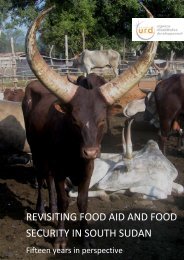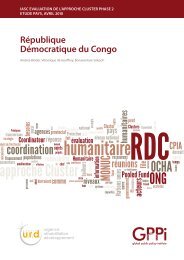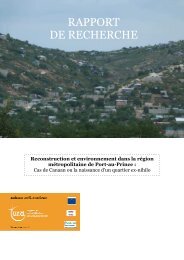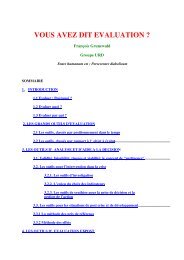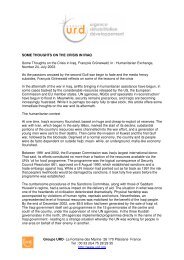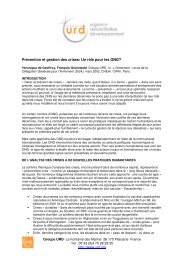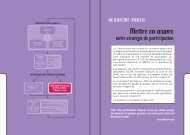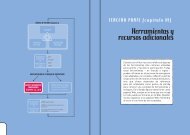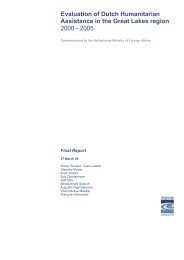Kabul Urban Survey - Groupe URD
Kabul Urban Survey - Groupe URD
Kabul Urban Survey - Groupe URD
You also want an ePaper? Increase the reach of your titles
YUMPU automatically turns print PDFs into web optimized ePapers that Google loves.
3.7 Different typologies of housing<br />
Figure 22, Figure 23, Figure 24 & Figure 25<br />
Traditional houses<br />
Most of this self build housing consists of<br />
traditional mud buildings with one or two<br />
floors, flat roofs and wooden windows.<br />
Blocks of flats<br />
Prefabricated blocks date from Soviet<br />
period (concentrated in Microrayan areas).<br />
‘Pakistani Houses’<br />
<strong>Urban</strong> issues<br />
These buildings take up a lot more space<br />
than traditional houses inside a plot<br />
surrounded by walls. This reduces the natural<br />
ecological equilibrium and traditional outside<br />
use. Pakistani houses are grouped together in<br />
rich ‘ghetto’ areas.<br />
Architectural issues<br />
Those new buildings copy a foreign style of<br />
architecture, either Arab or Pakistani. They are<br />
much larger than traditional houses. This<br />
building density could pose problem of lack of<br />
privacy.<br />
Environmental issues<br />
These buildings, with wide windows and<br />
powerful generators, are not energy efficient.<br />
Traditional mud houses<br />
Self building with rural techniques need<br />
rehabilitation and permanent maintenance.<br />
Building houses out of mud is energy efficient<br />
but can be complemented with other<br />
solutions, such as insulation and solar<br />
system.<br />
Page 18



